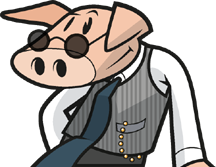 Pump Up the Profits
We all like selling something for more than we paid for it! The difference between the cost of a product and what we sell it for is called a profit.
If we can make a profit not just once, but over and over again, we can set up a business and earn a living from it.
Eddie, a smart teenager who has just left school, buys bananas direct from the grower at 10p a pound, and sells them at his local market for 30p a pound.
Every Saturday he collects 1,000 pounds of bananas, sets up a stall, and spends his day selling. .. His profit is 20p a pound, so if he sells all the bananas, his total profit is £200.
Actually, it’s not quite that good, because he has other costs to consider too.
He rents a cart for £20 a day, pays £15 for the market stall, and £40 to his brother, Ollie, to help him. He also has to hire a van to carry the bananas to market, which costs £30, and spends another £5 on drinks and sandwiches. All these costs add up to £110, so the maximum profit he can make is only £90.
If he only sells half the bananas though, his profit will be only £10. Eddie will wish he had spent his day working at Tesco, where he might have earned £50 stacking shelves, stayed warm, and not had to spend the rest of the week eating bananas!
Eddie can either spend his profit, or “invest” it in growing his business. He could buy other fruit as well, rent a bigger stall, and eventually open a shop...
That’s how Tesco started 80 years ago, (with one stall in a market). It now makes profits of £1,500,000,000 each year!!!
By Max King
Max is a Corporate Finance Adviser
 back back |













